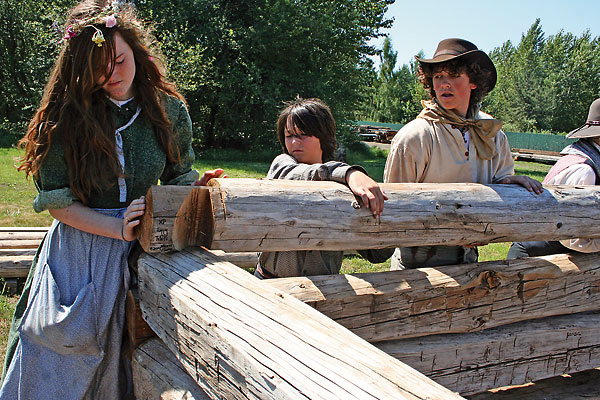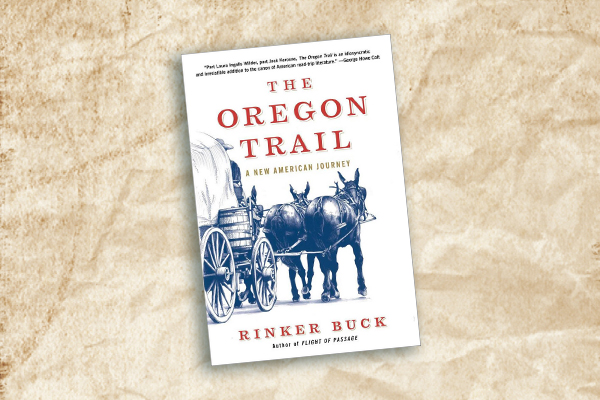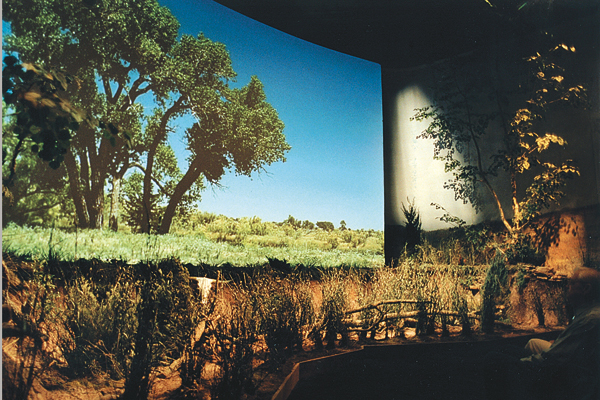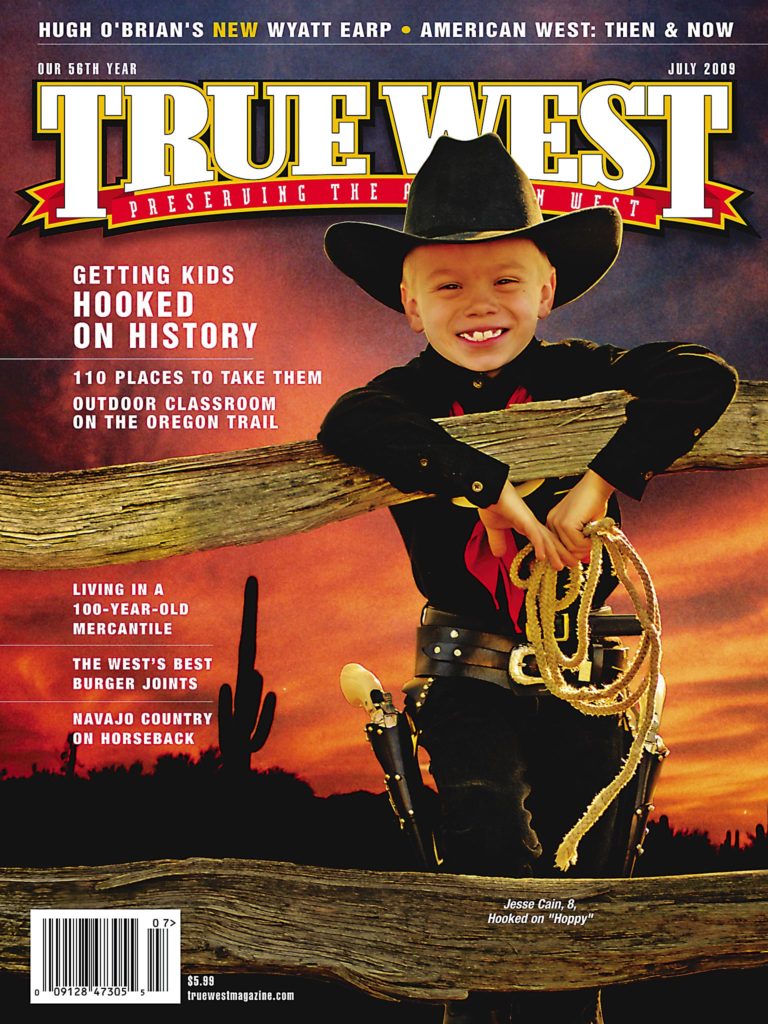
During the 19th century around 400,000 people traveled the Oregon and California Trails seeking new opportunities, land, gold. They traveled with friends and family, or left all of them behind and truly struck out on a new life.
When the Oregon-California Trails Association (OCTA) received a private donation and the directive to “make a documentary film about hardships on the trail,” I had the opportunity to work on the film with Bob Noll of Boston Productions.
So how could we tell this story from a fresh perspective?
Kids.
Weave the story of hardships from the journals and experiences of children on the Oregon Trail. So I pitched that to Bob.
Hey, let’s take some kids out on the Oregon Trail. Put them on a wagon train and let them learn about the history of the Trail, the experience of traveling as the pioneers did, and film that.
Are you crazy?
Certifiable.
It’ll be a blast.
Two years of planning culminated on a barren hilltop in central Wyoming on June 29, 2008, when we began the journey. On hand: 24 students from Massachusetts, Texas, Colorado, California, Oregon and Wyoming; three teachers from California and Wyoming; five wagons pulled by horses and mules, and driven by experienced teamsters; three outriders; a cook plus a crew of 10 and a support crew of another six. Ahead of us, two weeks on the Oregon Trail.
Time Travel on the Oregon Trail
We began at Prospect Hill, 20 miles west of Casper, Wyoming. If you follow Oregon Trail Road, the trip in a vehicle today takes about 45 minutes if the road is dry; don’t try it on a muddy day as then it is treacherous. It was a long, hard day of wagon travel in the 19th century. Our students arrived in vans to find a fully established wagon camp. They wore bright orange t-shirts (to make it easier to keep track of them while traveling from various parts of the country). They were hungry (imagine 24 kids ages 12 to 17 not being hungry). We fed them camp breakfast: bacon, eggs, homemade hash browns, muffins, fruit and juice.
While the students were eating, our teachers, Janet Wragge, Kim Merchant and Dave Vixie, morphed from present to past, re-emerging in 19th-century clothing.
“To play the part, you’ve got to look the part,” Mrs. Wragge told the students as she addressed them wearing her 1850s dress, apron, boots. Unseen: her many layers of undergarments such as those worn by period women. (By the end of the second day on the Trail, the students had begun calling her “Mailbox” for the slat bonnet she wore.)
Then we began to time travel.
First, we gave every student some new clothes, although we had them keep their own comfortable hiking shoes.
After they changed into pioneer dress, all of us gathered together to talk about communication. Then we took the kids’ cell phones away. “I’m supposed to call my parents, every day,” Eddie Streltsov told Mr. Merchant, holding up his cell phone. It didn’t matter that we took the phones; in the great wide open of Wyoming, they don’t work half the time anyway.
I, however, had computer service via an AT&T wireless card, so I sent a message to parents back home: “Don’t worry about your children if you do not hear from them. We took their phones away. We will call you if there is a problem.” I can only imagine what some of the parents thought about that message. To their credit none of them freaked out and called me; a few sent e-mail replies. We had also established an Internet blog, and I did try to keep it up to date so parents could track our progress.
After lunch everybody loaded into the wagons and we headed out on the Trail. We came upon a camp of topographical engineers, who were using John C. Fremont’s pioneer-era map and report of the region, and were continuing to map the country. While learning from these topographical engineers, the students stood in a place where the vista was free of modern intrusions: no trees and no roads, other than the two-track trail they had followed to this point. We set the hook quickly that this was a wide-open land and the adventure equally so.
In addition to sharing the message of hardships on the Oregon Trail, this film of the kids presents a message about preservation of the Trail, so on our first full day of traveling, we joined OCTA Wyoming Chapter President Pinky Ellis and member Tom Rea to learn about the organization’s efforts to map and mark the Trail. The kids assisted them in placing a new trail marker that will help people following the route know where the wagons passed in the 19th century.
The students set up their own tents at our Horse Creek Camp (a place used by Trail travelers throughout the emigration period; it was also the site of a Pony Express Station, and Mormon travelers met rescuers here in 1856 when they struggled west in heavy snowstorms). Dark clouds swept around camp as the tents went up; shortly afterward the storm front brought some of Wyoming’s well-known winds and the students found that in this outdoor classroom tests come quickly. After the peak wind gusts died down, it was necessary to put the tents up again as almost all of them had not been properly stretched and staked, so they collapsed in the wind.
The next day our route was along the Trail crossing private ranch land, the Pathfinder National Wildlife Refuge and on to Independence Rock for our third camp. Some of the students walked the 12 miles from Horse Creek Camp to Independence Rock; others walked just a portion of the Trail. Even so they all had the energy to climb to the top of the most written about landmark on the Oregon Trail.
I truly knew these students were capturing the spirit of the Trail when one of them said, “I don’t know what time it is or even what day it is. I just know we have morning, noon and night.”
Experiencing Shoshoni Culture
From Independence Rock we continued west to Devil’s Gate and the Mormon Handcart Ranch. Most 19th-century travelers passed by this location where the Sweetwater River slices through the Rattlesnake Range. A trading post, known as Seminoe’s Fort, was established here in 1855 and though abandoned and later burned, it has been re-created near the original site and we used it for some trading. The ranch, homesteaded by Tom Sun in the 1870s, is now owned and managed by the Church of Jesus Christ of Latter-day Saints, which has a visitor’s center in the old Sun ranch house that tells the story of the handcart companies. We visited these sites, as well as a small museum filled with ranch artifacts.
Our next day was filled with crossing the Sweetwater River more than once and encounters with other “travelers,” including a man with his pack horse, who was headed to California, and several Shoshoni Indians, who had been “stalking” the train all day but arrived in camp ready to barter for trade.
The night sky was studded with stars, the drums pounded, Shoshoni voices sang clearly, as the dancers—eventually joined by our students—wove through camp dancing, stirring up dust, sweeping by the fire. It was truly great to have these tribal members visit us and share their stories.
As I stood behind the cameras, watching this scene unfold naturally and fluidly, I could not help but think of the journal entries that describe similar scenes, for certainly Shoshonis—perhaps even Chief Washakie himself—came to the emigrant camps, where they traded, sang, danced and told stories just as his grandsons did with our In Pursuit of a Dream cast.
Destiny Awaits
In the 19th century, wagon companies separated at various points on the Trail: some people headed toward Oregon, while others went on to California. For our first week on the Trail, the teachers discussed which territory should be our destiny. Mr. Merchant and Mrs. Wragge insisted Oregon had more opportunity, particularly for families, while Mr. Vixie was obsessed with California and the idea that he might find gold out there.
Now our trip was a film project, not a real journey by wagon to Oregon, so we loaded wagons, livestock and people, and we began a long haul to Oregon where we would resume filming.
Leaving the Sweetwater Camp that had Split Rock in view, our route took us south on Highway 220 to Muddy Gap, then north on U.S. 287 before turning west on Highway 28. We detoured for lunch at South Pass, then continued on west to Montpelier, Idaho. We took Highway 28 southwest to Highway 372, then traveled northwest to U.S. 189. We followed that to Kemmerer, where we took U.S. 30 west and north through Cokeville to Montpelier. We were following the Oregon Trail all the way, often seeing the white carsonite markers placed by OCTA members.
When wagon trains stopped for a couple of days in a campsite to rest, they always chose a place with good water and feed for livestock. We found our own respite in Montpelier thanks to the good folks at the National Oregon/California Trail Center. Director Becky Smith welcomed our students for a dinner at her “covered wagon” dining area. She had arranged our campsite in a local park, and she gave us free tours of the interpretive center.
From Montpelier, we drove west along U.S.30 and then I-84, crossing Idaho and detouring to Trail sites along the way, including Shoshone Falls, before reaching our next campsite at the fairgrounds in Baker City, Oregon.
The wind was blowing too hard on top of Flagstaff Hill at the Oregon Trail Interpretive Center near Baker City for us to do much filming, but we spent time there anyway before returning to our camp for the night. Next we crossed the Blue Mountains, a true challenge for 19th-century travelers. Our route took us west on I-84 to The Dalles, then south on U.S. 197 to Tygh Valley. From there we turned west on Highway 48 to our camp in the Mt. Hood National Forest.
Here we unloaded everything and prepared to truly return to the Trail: the Barlow Road, which was the mountain crossing into the Willamette Valley, a route pioneered in 1846 by John Barlow.
The Deep Forest
Our students, weary of road tripping, were relieved to be out of the vans and in a totally different environment: a deep forest of the Pacific Northwest.
For the next three days we filmed along the Barlow Road, leaving behind most of the support services so the students and their new “wagon families” had to fend for themselves, including doing all of their own cooking.
Leaving the forest, we again made a short hop by vehicle (Highway 48 west to U.S. 26 to Sandy, Oregon, then southwest on Highway 211) to our destination: Philip Foster Farm in Eagle Creek, Oregon. The Barlow Road ended here in the 19th century, although certainly travelers continued on to Oregon City to camp at Abernathy Green. We spent a day filming concluding scenes at Foster Farm, before taking the students on to Oregon City for a dinner provided by the Northwest Chapter of OCTA.
Our final scenes of the film, with students once again in their modern clothes and orange In Pursuit of a Dream t-shirts, took place at Foster Farm before we sent the students on their way home on airplanes. They were tired, tanned and totally immersed in the experience of the Oregon Trail.
As we had hoped when we began planning this film adventure, by the time these kids returned home, they understood the overland migration and the value of preserving the Oregon Trail today. As one of them said, “If you erase the Trail, you erase history.” Both OCTA and Boston Productions believe the film will convey that message to students and families across the nation. It will premiere at the National OCTA Convention in Loveland, Colorado, this August 18, and at the Wyoming Film Festival in Saratoga on August 22.
“They breathed trail dust into their lungs,” says Associate Producer Quackgrass Sally, “and it went straight to their hearts.”






